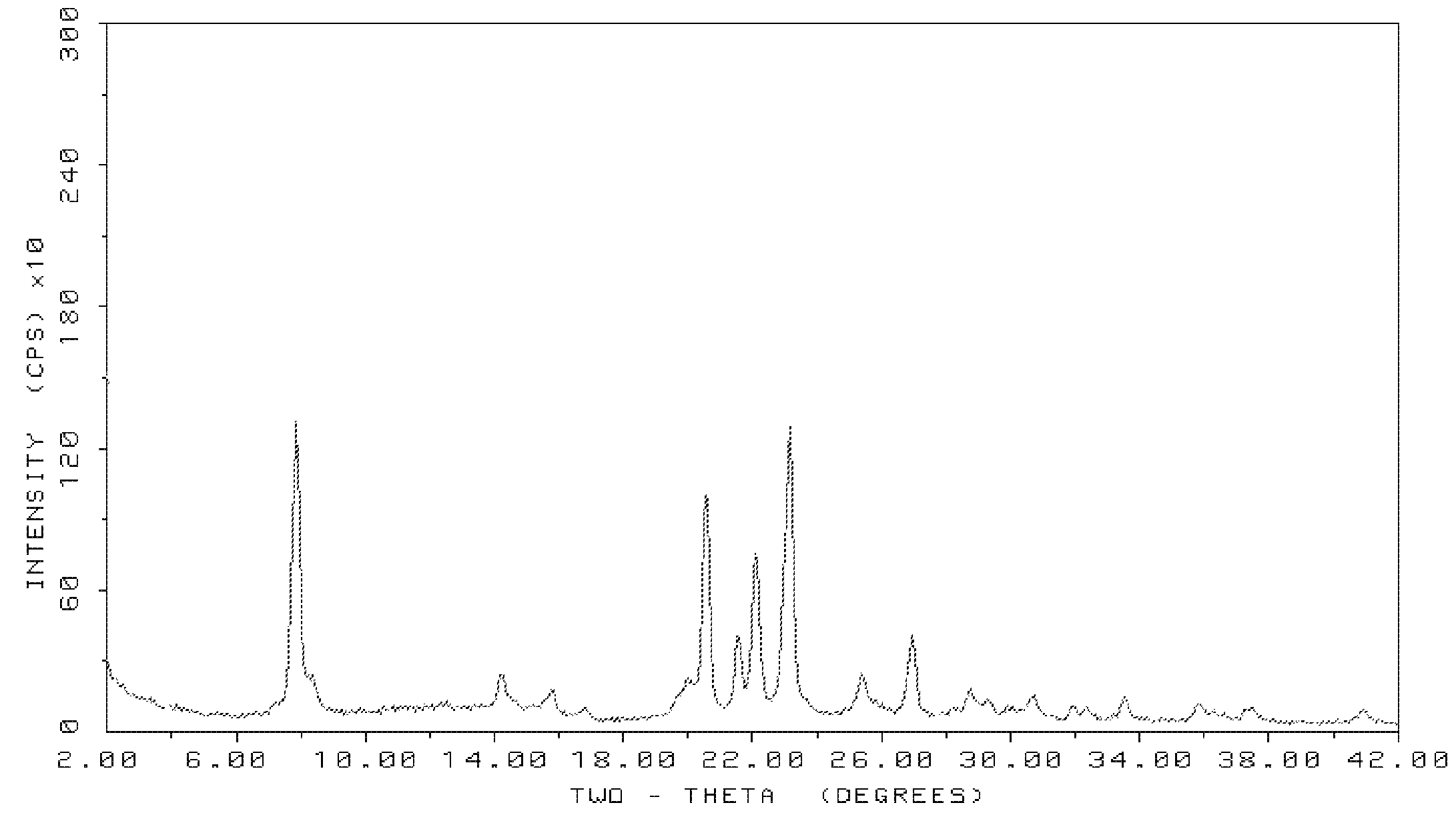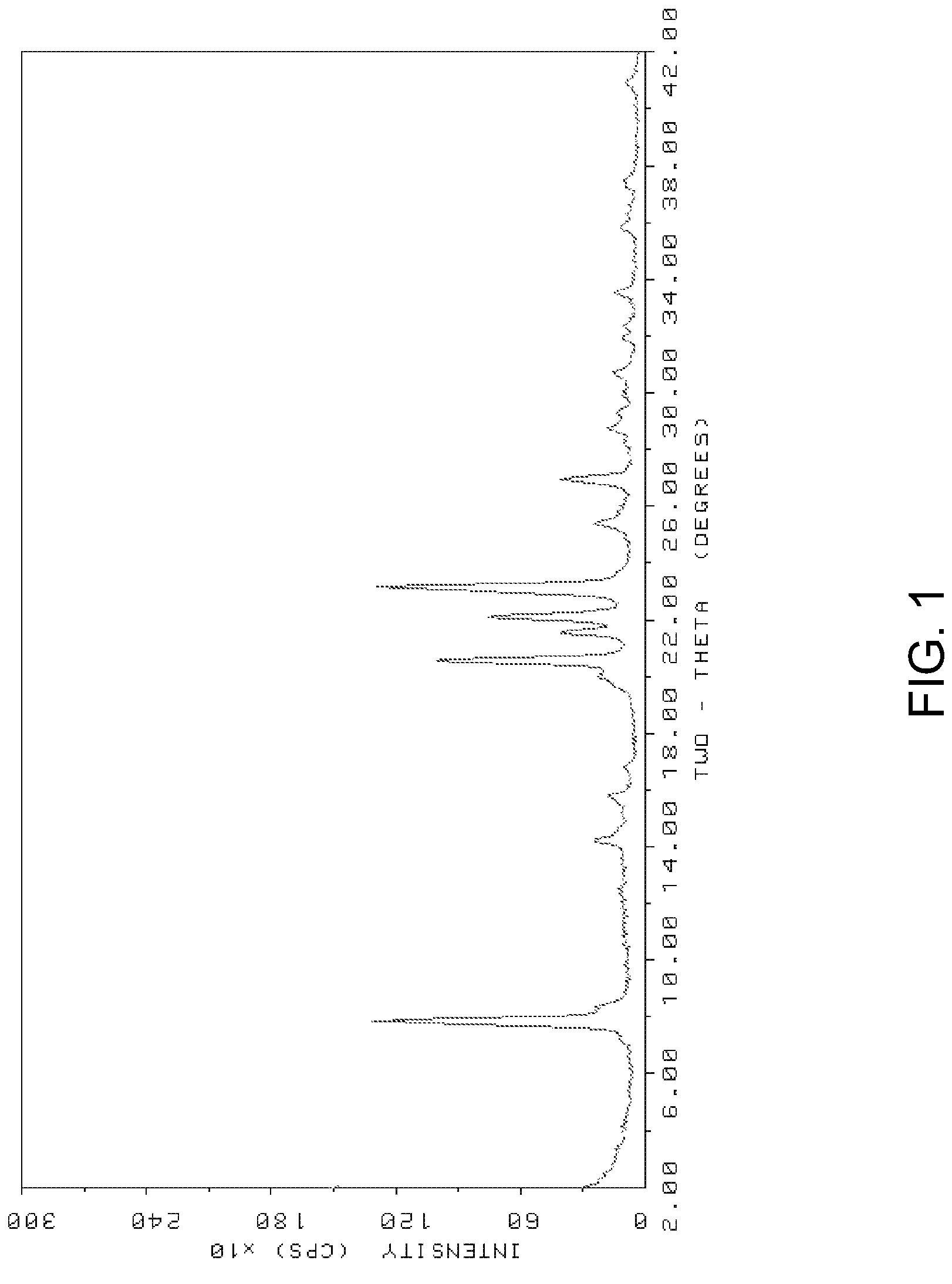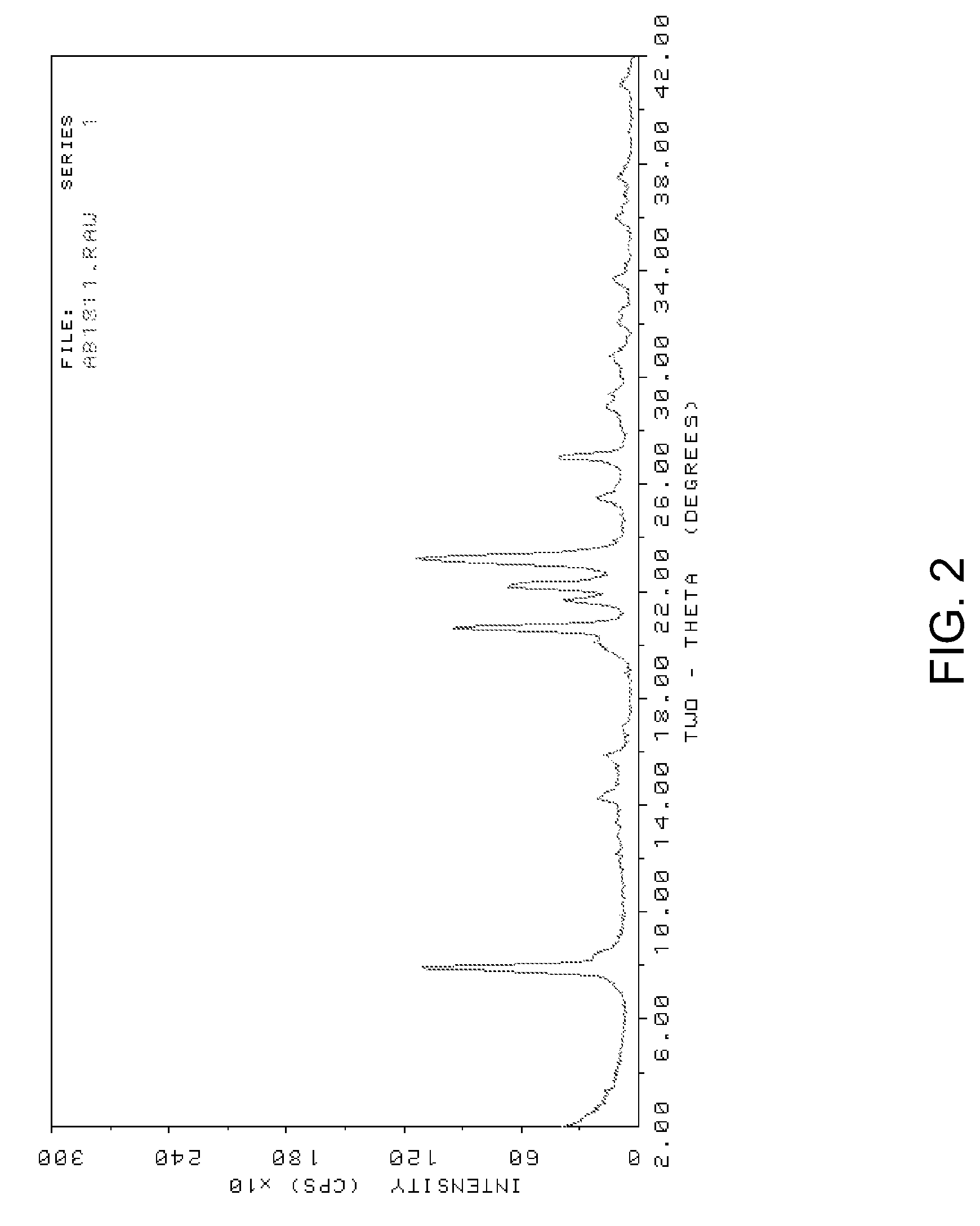Method for preparing SSZ-26/33 zeolites using novel structure directing agents
a technology of directing agent and zeolites, which is applied in the direction of physical/chemical process catalysts, silicon compounds, metal/metal-oxide/metal-hydroxide catalysts, etc., can solve the problems of time-consuming synthesis of ssz-26 and ssz-33, and the cost of known ssz-26 and ssz-33
- Summary
- Abstract
- Description
- Claims
- Application Information
AI Technical Summary
Problems solved by technology
Method used
Image
Examples
example 1
Synthesis of N-cyclohexylpyrrolidine from 1-Pyrrolidino-1-cyclohexene
[0084]N-Cyclohexylpyrrolidine was-synthesized by hydrogenation of 1-pyrrolidino-1-cyclohexene (Sigma-Aldrich) per the teachings in Example 7 of U.S. Pat. No. 6,544,495 to Saleh Elomari, issued Apr. 8, 2003.
example 2
Synthesis of 1,4-bis(N-cyclohexylpyrrolidinium)butane Dication
[0085]In a 250 mL round-bottom flask, 18.84 g N-cyclohexylpyrrolidine synthesized per Example 1 was dissolved in 75 mL acetone. Then 11.96 g 1,4-dibromobutane was added to the solution. The resultant solution was allowed to sit at room temperature for three weeks. The acetone was then removed by rotoevaporation. The resultant residues were then dissolved in isopropanol and the solution was then intermittently refluxed for 2-3 hour periods over the course of a week. After each refluxing period, the isopropanol was removed and the residues were washed with acetone. The product diquaternary ammonium sail then precipitated as a tan solid. The tan solid was then isolated by vacuum filtration. The resultant solid was then thoroughly rinsed with isopropanol to remove any reactant or monoquaternary products. The product was subsequently rinsed with acetone and then with ethyl ether.
[0086]After drying, the purity of the product sa...
example 3
Synthesis of 1,5-bis(N-cyclohexylpyrrolidinium)pentane Dication
[0087]In a 250 mL round-bottom flask, 18.84 g N-cyclohexylpyrrolidine synthesized per Example 1 was dissolved in 75 mL acetone. Then 11.96 g 1,5-dibromopentane was added to the solution. The resultant solution was allowed to sit at room temperature for three weeks. The acetone was then removed by rotoevaporation. The resultant residues were then dissolved in isopropanol and the solution was then intermittently refluxed for 2-3 hour periods over the course of a week. After each refluxing period, the isopropanol was removed and the residues were washed with acetone. The product diquaternary ammonium salt then precipitated as a tan solid. The tan solid was then isolated by vacuum filtration. The resultant solid was then thoroughly rinsed with isopropanol to remove any reactant or monoquaternary products. The product was subsequently rinsed with acetone and then with ethyl ether.
[0088]After drying, the purity of the product ...
PUM
| Property | Measurement | Unit |
|---|---|---|
| temperature | aaaaa | aaaaa |
| temperature | aaaaa | aaaaa |
| partial pressure | aaaaa | aaaaa |
Abstract
Description
Claims
Application Information
 Login to View More
Login to View More - R&D
- Intellectual Property
- Life Sciences
- Materials
- Tech Scout
- Unparalleled Data Quality
- Higher Quality Content
- 60% Fewer Hallucinations
Browse by: Latest US Patents, China's latest patents, Technical Efficacy Thesaurus, Application Domain, Technology Topic, Popular Technical Reports.
© 2025 PatSnap. All rights reserved.Legal|Privacy policy|Modern Slavery Act Transparency Statement|Sitemap|About US| Contact US: help@patsnap.com



